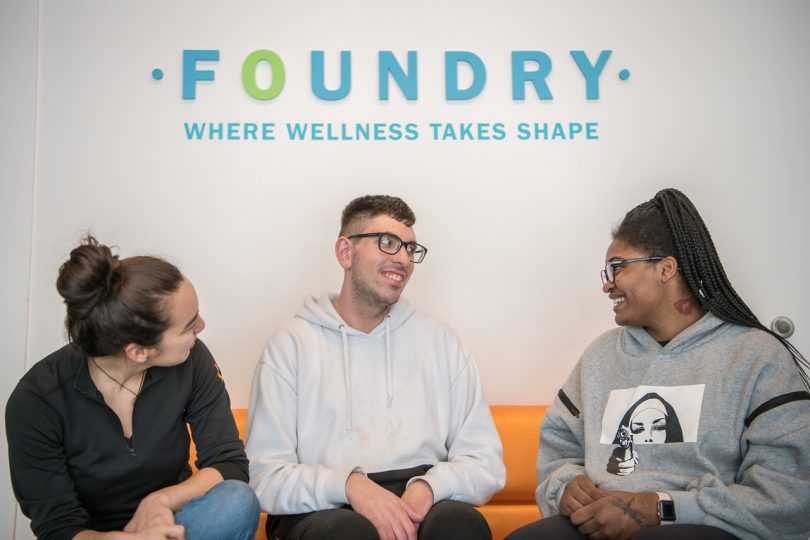Young people, particularly those experiencing homelessness, face unique challenges accessing services and need tailored substance-care, according to a new report.
Almost 1,800 BCers under 30 have died from toxic drug poisoning since 2016
More than 10,000 people have died from toxic drug poisoning in BC since the declaration of a public health emergency in 2016, nearly 1,800 of whom were young people under the age of 30.
The report, “Youth Voices on Treatment in the Shadow of the Overdose Crisis: Key Recommendations and Findings for Care Providers,” makes 10 recommendations to help care providers foster more constructive relationships built on mutual trust and respect. Report authors drew upon a series of qualitative research studies conducted with youth experiencing street involvement in Vancouver, Prince George, and Kelowna provides guidance and recommendations for health care providers.
Why do youth consume substances?
“Youth use substances for many different reasons,” says report co-author Dr. Danya Fast, who is an assistant professor in UBC’s department of medicine and a research scientist at the BC Centre on Substance Use (BCCSU). “They are consumed for pleasure and as part of socializing, but also to treat physical, emotional, psychological and even economic pain, such as the pain of crushing, entrenched poverty. As a result, the needs they have for care are equally diverse and complex, but rarely are those needs being met.”

This report emerged from a program of community-based participatory research focused on youth substance use and health. The program, based at the BCCSU, is comprised of five university researchers and a Youth Advisory Council of ten young people (ages 17 to 28) with lived and living experience of substance use and mental health concerns in the context of unstable housing and homelessness. Interviews with youth-focused care providers – including family physicians, nurse practitioners, nurses, drug and alcohol counselors, and social workers – also informed the report.
Report authors say developing interventions and supports that better align with and address the needs of youth who use substances could help improve treatment retention and outcomes.
Juggling poverty, health problems and homelessness
Research that informed the report’s recommendations found many barriers to treatment and care. Many juggled poverty, various health challenges and unstable housing or homelessness, along with work and family commitments, which makes many treatment programs difficult to access and hard to remain in. Furthermore, distrust with institutions discouraged engagement with treatment and care.
“Care providers have to listen to and connect with young people who use drugs, and then see how they can work with us and not against us,” says Haleigh [last name withheld to protect identity], who is a member of the Youth Advisory Council.
Key recommendations in the report:
- Centre relationship-building, self-determination, and safety in treatment and care
- Present pharmacotherapies as one piece of a whole that includes housing, employment, income, social, and cultural supports
- Avoid approaches that privilege monitoring and surveillance, which can signal danger to youth and lead them to disengage with care
- Seek permission before sharing information about youth with other providers
- Focus on the present, not the past
- Do not reduce youth to their “files”
- Involve youth as partners in developing plans and timelines for OAT and psychotropic medications, including pathways to tapers
- Provide youth who want treatment with access to the full range of OAT
- Recognize that many youth prefer treatment modalities that give them more control and subject them to less surveillance
- Acknowledge the use of cannabis as a treatment and harm reduction strategy
Many of the young people interviewed as part of research for the report expressed desires for stable housing that was safe, comfortable, and clean. They spoke about securing a reliable and adequate source of income, preferably via employment. However, in the absence of desirable housing and adequate income, youth were often left with the crushing sense that, despite their efforts, treatment would not ultimately help them to “get somewhere better.”
Critical timing of report

“With the ongoing toxic drug poisoning crisis, this report comes at a critical time by providing important actions for the province to respond to in a meaningful and tangible way – by centering the voices of youth from diverse BC communities, voices that are often not heard,” says Dr. Skye Barbic, Head Scientist at Foundry, a province-wide network of clinics for young people that began at St. Paul’s Hospital.
The report authors hope the recommendations will encourage care providers to discuss treatment interventions that focus on the full spectrum of needs among young people.
“This includes housing, employment, income support, opportunities for leisure and recreation, as well as cultural and spiritual practices,” Dr. Fast says.
A summary of recommendations is here: https://bit.ly/youth-voices-recommendations





